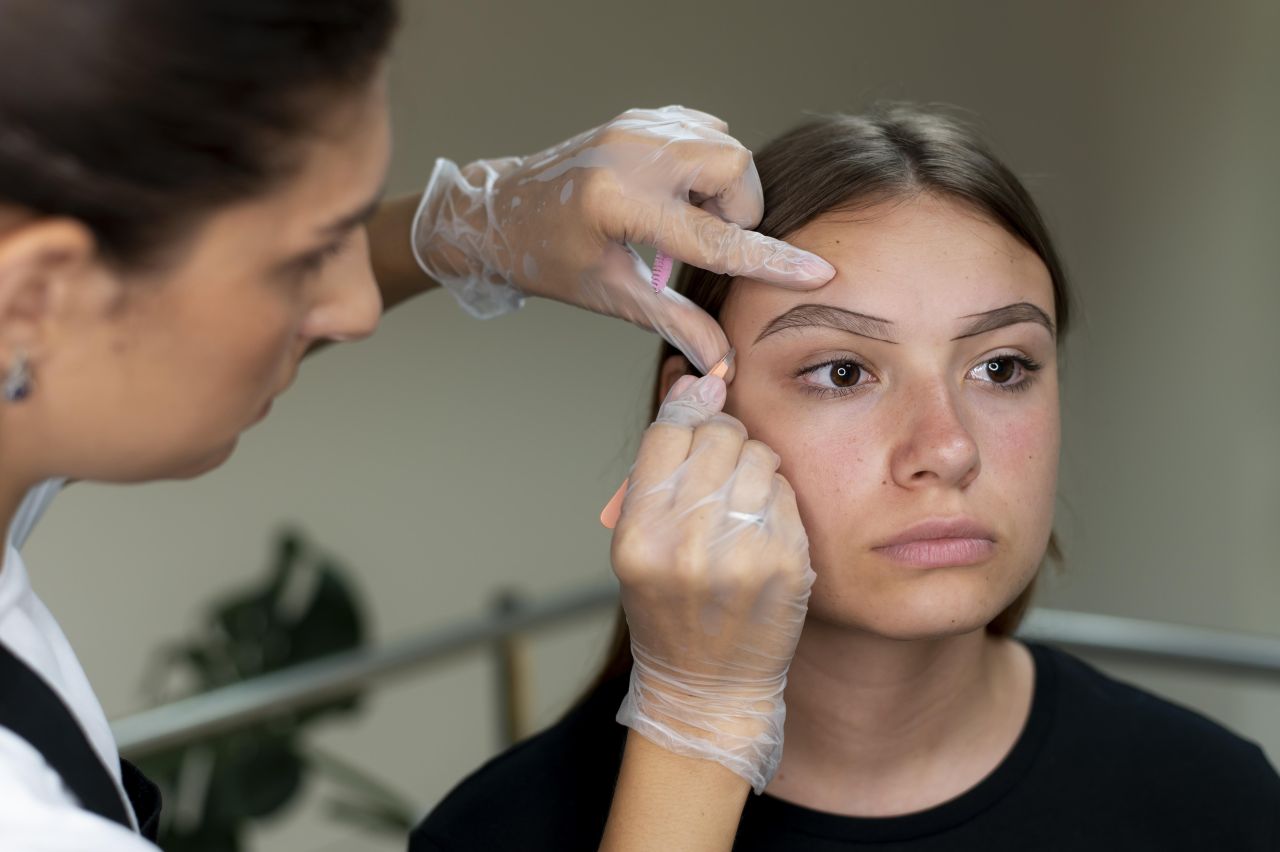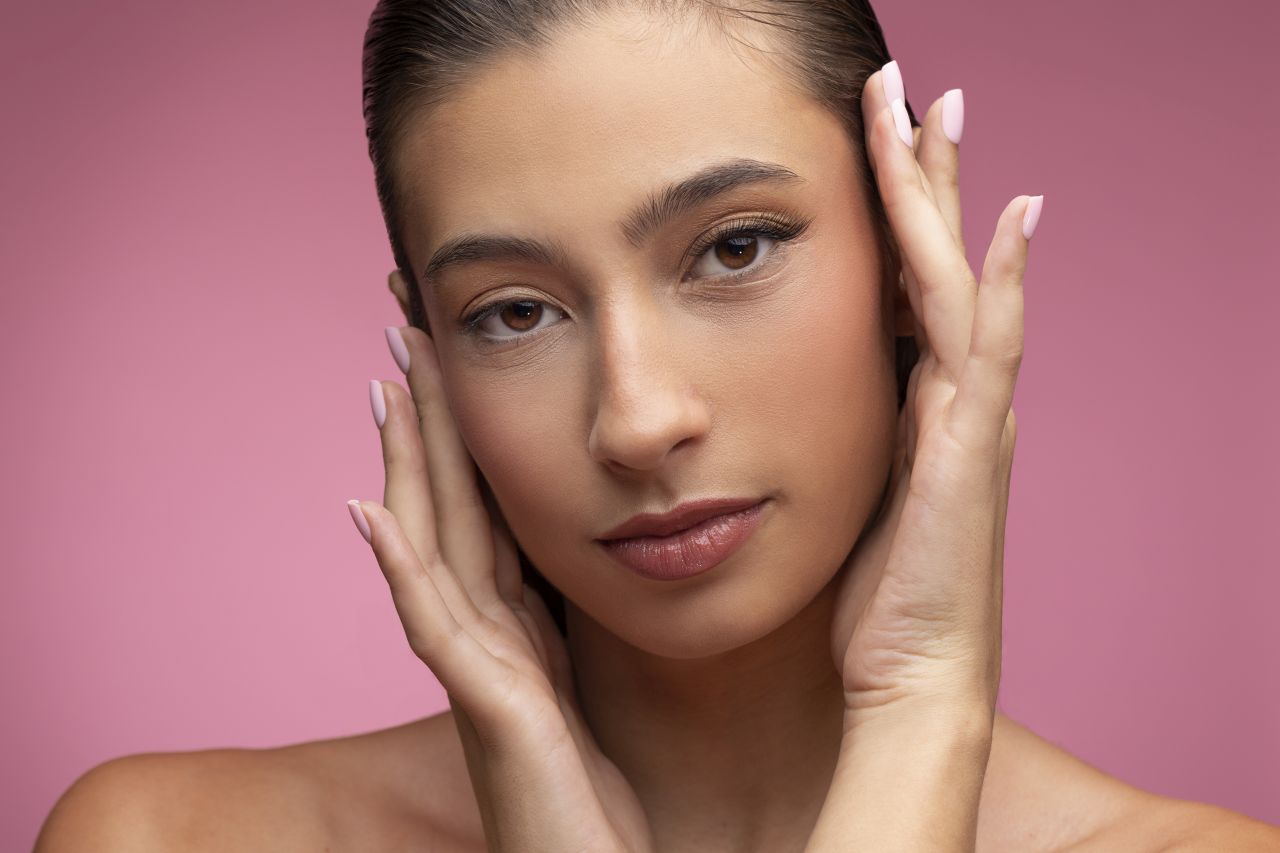Microblading has gained immense popularity as a semi-permanent cosmetic procedure, especially for those looking to enhance the appearance of their eyebrows. However, before deciding to undergo this procedure, it’s essential to fully understand what it involves, how it differs from traditional eyebrow tattooing, and what you can expect from the experience.
In this guide, we will walk you through everything you need to know about microblading, from its definition to aftercare and potential side effects.
Let’s Get Straight To The Point
What Is Microblading?
Microblading is a cosmetic technique designed to enhance your eyebrows’ appearance by mimicking natural brow hairs using a small, handheld tool. Unlike traditional eyebrow tattooing, microblading deposits pigment into the skin’s upper layer, creating fine, hair-like strokes. This semi-permanent solution gives the illusion of fuller, well-shaped brows while maintaining a natural look.
Process Of Microblading
The microblading procedure involves using a fine blade to deposit pigment into the skin manually. The technician carefully etches strokes that resemble natural eyebrow hairs, ensuring precision and symmetry. It differs significantly from eyebrow tattooing, which typically uses a machine and results in a more solid, permanent look. Microblading offers a softer and more customizable approach to enhancing your brows.
Things To Know Before Getting Microblading
Before opting for microblading, it’s important to know several factors that can affect your overall experience and satisfaction with the results. Let’s break these down in more detail.
1. Microblading Is Not Permanent
One of the first things you need to understand is that microblading is semi-permanent. Unlike a traditional tattoo, which embeds ink deeply into the skin, microblading pigment only penetrates the top layers of the skin. As a result, the pigment will gradually fade over time. This can be advantageous, as it allows for flexibility in changing your brow shape and color as trends evolve or your preferences shift.
- Duration: The results typically last between 12 to 18 months.
- Touch-ups: Regular touch-ups are necessary to maintain the desired look. Most technicians recommend scheduling a touch-up 4 to 6 weeks after the initial procedure, and then annually.
2. Pigment Fading Over Time
Over time, the pigment used in microblading will fade. Several factors can influence how quickly your brows fade, including your skin type, lifestyle, and adherence to aftercare instructions.
- Skin Type: Oily skin tends to break down pigment faster than dry skin, which may result in quicker fading.
- Sun Exposure: Regular exposure to sunlight can accelerate the fading process, so it’s crucial to protect your brows with sunscreen once they’ve healed.
- Aftercare: Proper aftercare during the healing process will extend the life of your microblading. Follow the recommended aftercare protocol provided by your technician.
3. Pain Level and Comfort
Many people are concerned about the pain involved in microblading. The good news is that while some discomfort may be experienced, it’s generally well tolerated.
- Numbing Cream: Most technicians apply a topical numbing cream before the procedure to minimize discomfort. As a result, many clients report feeling only slight pressure or scratching during the process.
- Pain Tolerance: If you have a low pain tolerance, it’s helpful to communicate this with your technician so they can ensure you are as comfortable as possible during the procedure.
4. Healing Time and Process
The healing process after microblading is crucial for achieving optimal results. It’s essential to understand the stages of healing and follow aftercare instructions closely.
- Initial Healing: The first stage of healing typically lasts 1 to 2 weeks, during which the skin may feel slightly tender, and you might experience mild redness and swelling.
- Complete Healing: Full healing can take up to 6 to 8 weeks. During this time, you may notice some scabbing and pigment lightening, which is normal.
5. Aftercare Instructions
Proper aftercare is critical for ensuring the longevity of your microbladed eyebrows. Failure to follow aftercare guidelines can result in suboptimal results or even infection.
- Avoid Moisture: During the first week, avoid getting your brows wet, as water can interfere with the healing process and cause the pigment to fade unevenly.
- Ointment Application: Use the recommended aftercare ointment to keep the area moisturized and promote healing.
- Sun Exposure: Stay out of direct sunlight and avoid swimming during the healing period to prevent fading and potential infection.
Potential Side Effects Of Microblading
As with any cosmetic procedure, microblading carries some potential side effects. However, these are typically minor and temporary.
1. Redness and Swelling
It’s common to experience mild redness and swelling immediately after the procedure. This usually subsides within a few days and is not a cause for concern.
2. Scabbing
As the skin heals, you may notice small scabs forming over the microbladed area. It’s essential not to pick at these scabs, as doing so can cause pigment loss or uneven healing.
3. Infection Risk
While rare, there is a small risk of infection if proper hygiene standards are not followed during the procedure or aftercare. Ensure your technician uses sterilized equipment and follows hygiene protocols to minimize this risk.
Choosing A Qualified Microblading Technician
Selecting the right technician is vital for achieving the desired results and ensuring a safe procedure. Here’s what you should look for:
1. Certification and Experience
- Certification: Ensure that your technician is certified and trained in microblading. This guarantees that they have the necessary skills and knowledge to perform the procedure safely and effectively.
- Portfolio: Ask to see a portfolio of their previous work. This will give you an idea of their style and the quality of their results.
2. Reviews and Recommendations
- Client Reviews: Check online reviews from previous clients to get a sense of their experiences. Positive feedback is a good indicator that the technician provides satisfactory results.
- Word of Mouth: Personal recommendations from friends or family members who have undergone microblading can also be valuable in your decision-making process.
Consultation With A Microblading Technician
Before undergoing microblading, it’s highly recommended to schedule a consultation with a qualified technician. This is an opportunity to discuss your needs, expectations, and any concerns you may have.
1. Ask Questions
During your consultation, don’t hesitate to ask questions about the technician’s experience, technique, and recommended aftercare routine. A good technician will take the time to explain the process in detail and ensure you feel comfortable with your decision.
2. Discuss Your Desired Look
Every client has unique preferences regarding their eyebrow shape and color. Be sure to communicate your desired look clearly during the consultation, so the technician can customize the procedure to suit your individual style.
Costs And Maintenance Of Microblading
The cost of microblading varies depending on the technician’s expertise and location, but it typically includes both the initial procedure and a follow-up touch-up. Here’s what you can expect:
1. Initial Costs
- Procedure: The initial procedure usually costs between $400 and $800, depending on the technician’s reputation and the complexity of the work required.
- Touch-up: Most technicians include a complimentary touch-up within 4 to 6 weeks of the initial appointment to refine the results.
2. Ongoing Maintenance
- Annual Touch-ups: To keep your brows looking fresh, it’s recommended to schedule an annual touch-up. This helps maintain the shape and color, ensuring that your brows continue to look natural and defined.
Thoughts On Microblading
Microblading can dramatically enhance your eyebrows, giving them a fuller, more defined appearance. However, it’s important to manage your expectations and understand that results may vary based on your skin type, aftercare, and the technician’s skill.
1. Proper Aftercare for Best Results
To achieve the best results from microblading, be diligent about following aftercare instructions. Keep your brows clean and dry during the healing process, apply any recommended ointments, and avoid activities that could cause excessive sweating or moisture exposure.
2. Patience During the Healing Process
Remember, the final results of microblading are not immediately visible after the procedure. Your brows will go through a healing process, during which the color may appear darker or lighter than expected. Be patient, and allow your brows the necessary time to heal before assessing the final outcome.
Conclusion
Microblading is an increasingly popular semi-permanent solution for enhancing the appearance of your eyebrows, offering a more natural and customisable alternative to traditional eyebrow tattooing. While the procedure can provide fuller, well-defined brows, it’s important to be informed about the process, the semi-permanent nature of the results, and the necessary aftercare.
Understanding that microblading is not permanent, with results lasting up to 18 months, helps manage expectations. Proper aftercare, such as keeping the brows dry during healing and avoiding sun exposure, is essential for maintaining the desired look and ensuring long-lasting results. Additionally, factors like skin type and sun exposure can influence how quickly the pigment fades, and annual touch-ups are recommended to keep your brows fresh.
Choosing a skilled and certified technician is crucial for ensuring a safe, high-quality outcome. Always check reviews, ask for recommendations, and discuss your desired eyebrow shape and colour during a consultation to achieve your ideal look.
While some side effects, such as mild redness, swelling, or scabbing, can occur, these are typically minor and temporary. Following aftercare guidelines and selecting an experienced technician can help reduce risks, including infection.
FAQs About Eyebrow Tattoos
Can Eyebrow Tattoos Be Removed?
Yes, but removal is difficult and may require laser treatments. It’s important to choose a skilled artist to avoid the need for removal.
How Much Does Eyebrow Tattooing Cost?
The cost varies by location and the experience of the artist, but prices generally range from $300 to $1,000 for the initial session, with touch-ups costing less.
What Skin Types Are Best Suited For Eyebrow Tattooing?
Eyebrow tattooing can be done on all skin types. However, oily skin types may experience faster fading, while dry skin typically holds pigment longer.
Can I Exercise After Getting My Eyebrows Tattooed?
Avoid strenuous activities that cause excessive sweating for the first 7-10 days. Sweat can affect the healing process and pigment retention.
Are There Any Side Effects Or Risks?
Minor swelling, redness, and tenderness are common immediately after the procedure. In rare cases, allergic reactions or infections can occur if aftercare instructions aren’t followed.


